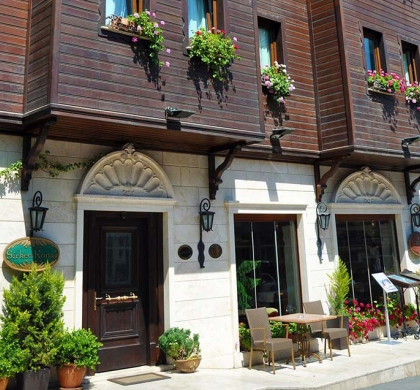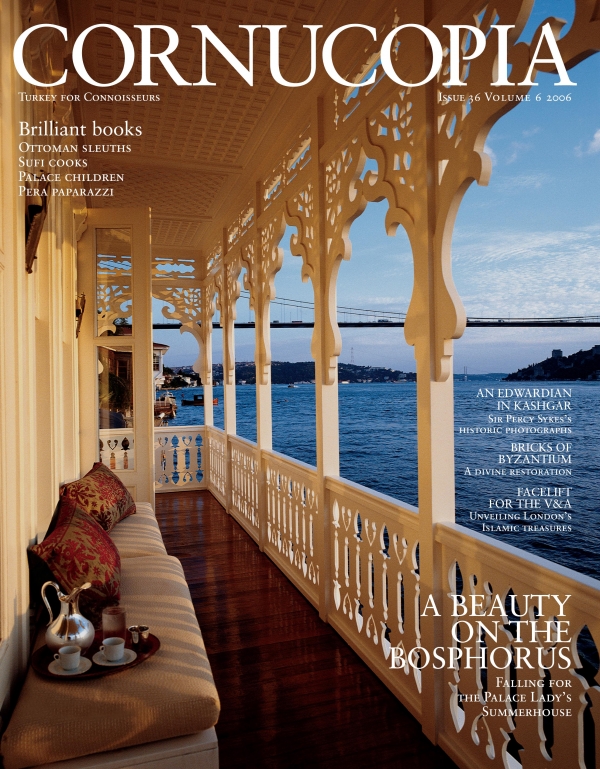Buy or gift a stand-alone digital subscription and get unlimited access to dozens of back issues for just £18.99 / $18.99 a year.
Please register at www.exacteditions.com/digital/cornucopia with your subscriber account number or contact subscriptions@cornucopia.net
Buy a digital subscription Go to the Digital EditionA small and perfectly formed exhibition of Iznik pottery held in Qatar has given birth to a fittingly exquisite catalogue
Iznik today is a peaceful backwater a hundred miles south of the seething metropolis of Istanbul. It stands enclosed by fifth-century Byzantine walls and surrounded by peach and olive groves – quietly prosperous in a rural sort of way. You would never know that for two centuries it produced the finest pottery in the history of Islamic art. A collection of Iznik objects built up in the last decade will be housed in Qatar’s new Museum of Islamic Art.
A taste of what will be on permanent view was provided in March by a dramatic exhibition in Qatar’s capital, Doha. With just thirty-four pieces, it spanned the entire two centuries of Iznik’s history from 1480 and the wealth of sources that inspired it. The catalogue to this collection, by John Carswell, brilliantly captures the rich colours, lustrous glazes and confident designs that make Iznik ceramics unique. In this article we highlight five of the exhibits, and Godfrey Goodwin, doyen of Ottoman art historians, offers a personal appraisal of the exceptional catalogue.
IZNIK WITH A FLOURISH
Thanks to John Carswell, a catalogue of an exhibition of some thirty Iznik objects is transformed into a major text. This book is a work of art in its own right, from its loose cover onwards. And if thetext at times spreads across wide pages, the journey is one of grace. Carswell’s text is a deceptively easy journey for the mind. Its visual sensitivity is illuminating even to someone who has enjoyed Iznik for more than fifty years.
The quality of this royal collection from Qatar is indisputable. There is no equal to the vigour of the wrestling tulips obeying elementary forces as they forge their ways in opposite directions. And one can only be pleased to meet animals such as leaping foxes which seem as though they could be stroked. Carswell makes the point that this collection appeals to the senses and the intellect alike. John Carswell asked Misha Anikst to design the book, which was an inspiration. I well recall the thrill – there can be no other word and it ceases to be vulgar – I experienced when I had the opportunity of visiting Anikst’s printing workshop in Moscow at the time of the Chernobyl disaster. Here was creative work which defied the insolence of a dictatorial regime.
One must praise the quality of the illustrations in this book, which are all-important because they expose every detail of the colouring and above all the shadows created by, say, the overlap from leaves into the background. Carswell rightly determined that the photographs, by Richard Valencia, should dominate the book. One is forced to look again at pieces which one thought one knew. And Valencia’s work supports Carswell’s insight and experience in more ways than by shadows. The element of chance is the life force which differentiates pottery from porcelain. At Worcester or Sèvres this visual energy might be called smudging. It is nothing of the sort. It is the vitality of the potter’s hands, and its power could not be plainer to see. It transcends the dictates of the palace design studios, and the rules that caged the artist’s creativity.
Our appreciation is greatly enhanced by Julian Henderson’s probing pages on the technological details essential to our appreciation of Iznik masterpieces, especially his analysis of the glazes used. Kânuni Süleyman – Süleyman the Magnificent – gave up the use of gold and silver plates in favour of Iznik as a sign of mourning when his wife Haseki Hürrem died. Among those at the palace who used Iznik plates were the halberdiers, whose barracks were next to the harem’s carriage door. They were very careless in their washing up. Forty years ago, when the major restoration of the palace began, work was held up by the main drain. It was clogged with bits and pieces of Iznik which had been used to cover tables in the sultan’s private kitchen. Try as I might, I could not get two pieces to match, hundreds though there were.
Godfrey Goodwin
Red peppers, chillies, maize and sunflowers set the Mediterranean ablaze with their pungent flavours and fiery colours. But of all the Aztecs’ gifts, it is the tomato, above all, that tastes of the sun
The Ottomans were not only passionate about flowers. They turned the enjoyment of gardens into an art form. John Carswell leafs through a lavish volume which unlocks the gate to the pleasure grounds of Istanbul’s imperial palaces.
SPECIAL OFFER: order three beautiful garden-themed issues, including this one, for only £60. List price £102
Sold in 2003 for record prices, these magical daguerrotype plates of Istanbul in the 1840s are the earliest known photographic images of the city. They are the work of Joseph-Philibert Girault de Prangey, an obsessive Frenchman with a passion for Islamic architecture. By Elizabeth Meath Baker.
In the closing years of the nineteenth century, the Aegean coast of Turkey witnessed three of the greatest archaeological finds of all time. The discovery of Ephesus and Troy made international headlines overnight. But the third – an unassuming stone house in an isolated forest – was immediately enveloped in secrecy. By Donald Carroll
Under the Ottomans, Kirkuk’s ancient citadel was the heart of a thriving cosmopolitan city. But politics and oil have reduced it to a deserted ruin. Owen Matthews, who has been covering northern Iraq for several years, visited Kirkuk at the end of the recent war. Photographs by Ashley Gilbertson
Martyn Rix sidesteps the concrete condos of the Turkish Riviera to go searching for native flowers.
SPECIAL OFFER: order five beautiful garden-themed issues, including this one, for only £80. List price £122
Dipping into a Mediterranean idyll, Stephen and Nina Solarz have built a haven high above the harbour of Kalkan. Andrew Finkel paid them a visit. Photographs by James Mortimer









Cornucopia works in partnership with the digital publishing platform Exact Editions to offer individual and institutional subscribers unlimited access to a searchable archive of fascinating back issues and every newly published issue. The digital edition of Cornucopia is available cross-platform on web, iOS and Android and offers a comprehensive search function, allowing the title’s cultural content to be delved into at the touch of a button.
Digital Subscription: £18.99 / $18.99 (1 year)
Subscribe now